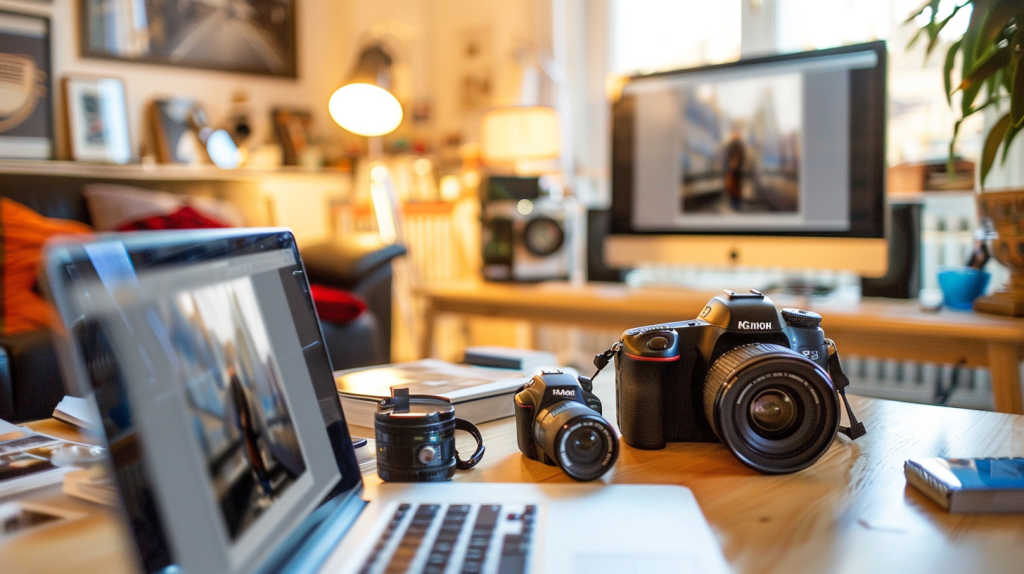
In the world of online shopping, your product photos are often the first (and only) chance to make a lasting impression. Unlike brick-and-mortar stores where customers can see, touch, and try products, e-commerce relies heavily on visual appeal. High-quality product photography can significantly impact conversion rates, reduce returns, and build trust with potential buyers. This comprehensive guide covers the best practices for showcasing your products through stunning visuals.
1. Choosing the Right Equipment
- Camera:
- DSLR or Mirrorless: Ideal for professional-quality images, offering manual controls and interchangeable lenses. Entry-level models are a good starting point.
- Smartphone: Modern smartphones have excellent cameras and are suitable for smaller businesses or quick shots.
- Key Considerations: Resolution (megapixels), image sensor size, and lens options.
- Lenses:
- Prime Lens (50mm): Versatile and affordable, great for product portraits and detail shots.
- Macro Lens: Essential for capturing close-up details of small products like jewellery or electronics.
- Zoom Lens: Offers flexibility for capturing products at different distances without moving the camera.
- Tripod:
- Why it’s important: Ensures sharp, blur-free images, especially in low-light conditions.
- Types: Lightweight travel tripods, sturdy studio tripods.
- Lighting: (Dedicated section below)
- Backdrops:
- Seamless Paper: Provides a clean, professional background.
- Fabric: Adds texture and visual interest.
- Props: Use sparingly to enhance the product’s appeal (see “Composition and Styling”).
2. Lighting Techniques
- Natural Light:
- Pros: Free, creates soft and flattering light.
- Cons: Can be inconsistent and difficult to control.
- Best Practices: Shoot near a window with indirect sunlight, use a reflector to bounce light.
- Artificial Light:
- Softboxes: Diffuse harsh light and create a more even illumination.
- Umbrellas: Similar to softboxes, but more portable and affordable.
- Ring Lights: Ideal for product close-ups, creating a halo effect around the subject.
- Key Considerations: Colour temperature, brightness, and adjustability.
- Three-Point Lighting:
- Key Light: The main light source, positioned to one side of the product.
- Fill Light: Reduces shadows and fills in dark areas.
- Back Light: Separates the product from the background.
3. Composition and Styling
- Rule of Thirds:
- What it is: Divide the frame into nine equal parts and place the product along the lines or at the intersections.
- Why it works: Creates a more balanced and visually appealing composition.
- Negative Space:
- What it is: The empty space around the product.
- Why it matters: Helps to isolate the product and draw attention to its features.
- Angles and Perspectives:
- Eye-Level: Provides a realistic view of the product.
- High Angle: Emphasises the product’s shape and details.
- Low Angle: Creates a sense of power and importance.
- Props:
- Use Sparingly: Props should enhance, not distract from, the product.
- Relevance: Choose props that are relevant to the product and its target audience.
- Colour Coordination: Ensure that props complement the product’s colour scheme.
- Show Scale & Context: Use props or include other elements to give the viewer a sense of the product’s size and how it is intended to be used.
4. Image Editing
- Software:
- Adobe Photoshop: The industry standard for professional image editing.
- Adobe Lightroom: Streamlines the editing workflow and offers powerful editing tools.
- GIMP: A free and open-source alternative to Photoshop.
- Key Adjustments:
- Brightness and Contrast: Optimise the overall exposure and contrast of the image.
- Colour Correction: Ensure accurate colour representation.
- Sharpening: Enhance the details and sharpness of the product.
- Removing Blemishes: Eliminate any distractions or imperfections.
- Background Removal: Create a clean, white background for product listings.
5. Optimising Images for the Web
- File Format:
- JPEG: Ideal for photographs, offering a good balance between image quality and file size.
- PNG: Best for images with transparency or graphics with sharp lines.
- Image Size:
- Dimensions: Resize images to the appropriate dimensions for your website.
- File Size: Compress images to reduce file size without sacrificing quality. Aim for under 500KB, ideally much smaller.
- Alt Text:
- Why it matters: Improves accessibility and SEO.
- Best Practices: Use descriptive keywords to describe the product.
- File Naming:
- Use Descriptive Keywords: Use keywords in the file name to improve SEO.
- Example: “red-leather-wallet.jpg” instead of “IMG_1234.jpg”
Conclusion
High-quality product photography is essential for e-commerce success. By investing in the right equipment, mastering lighting techniques, paying attention to composition and styling, and optimising images for the web, you can create visually appealing product photos that attract customers, increase conversions, and build your brand.